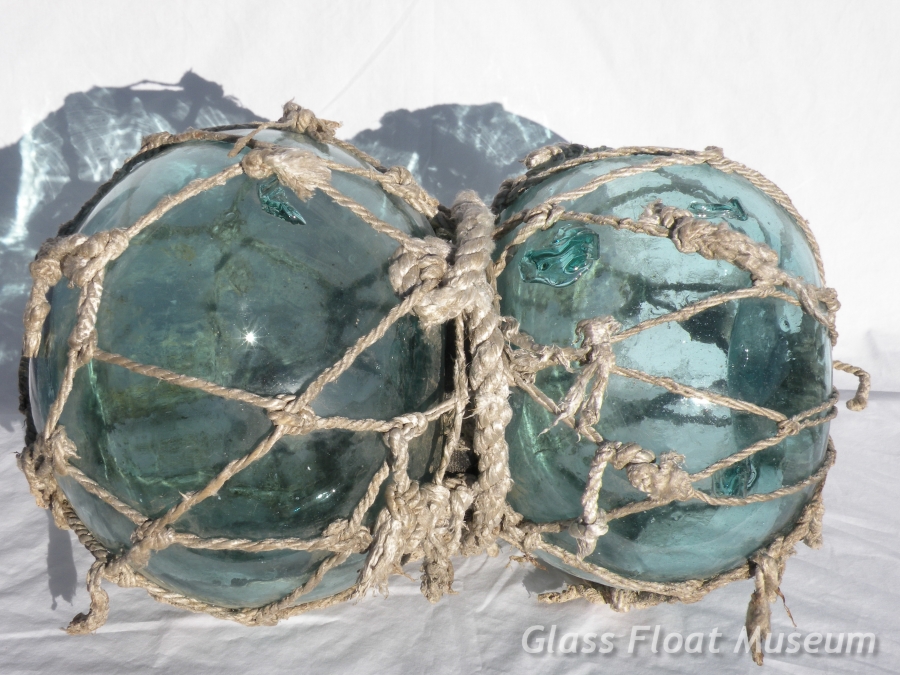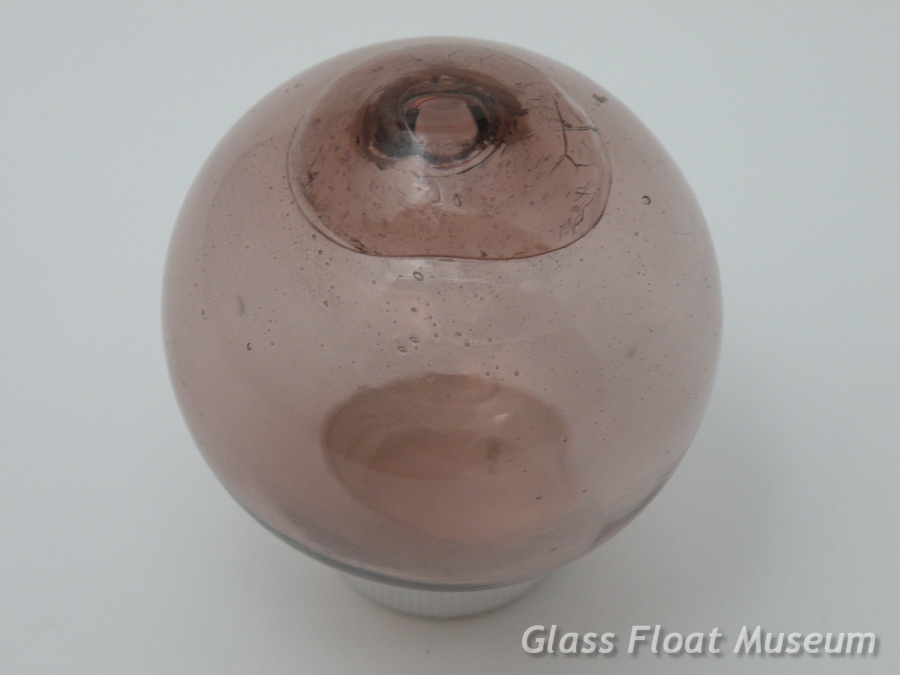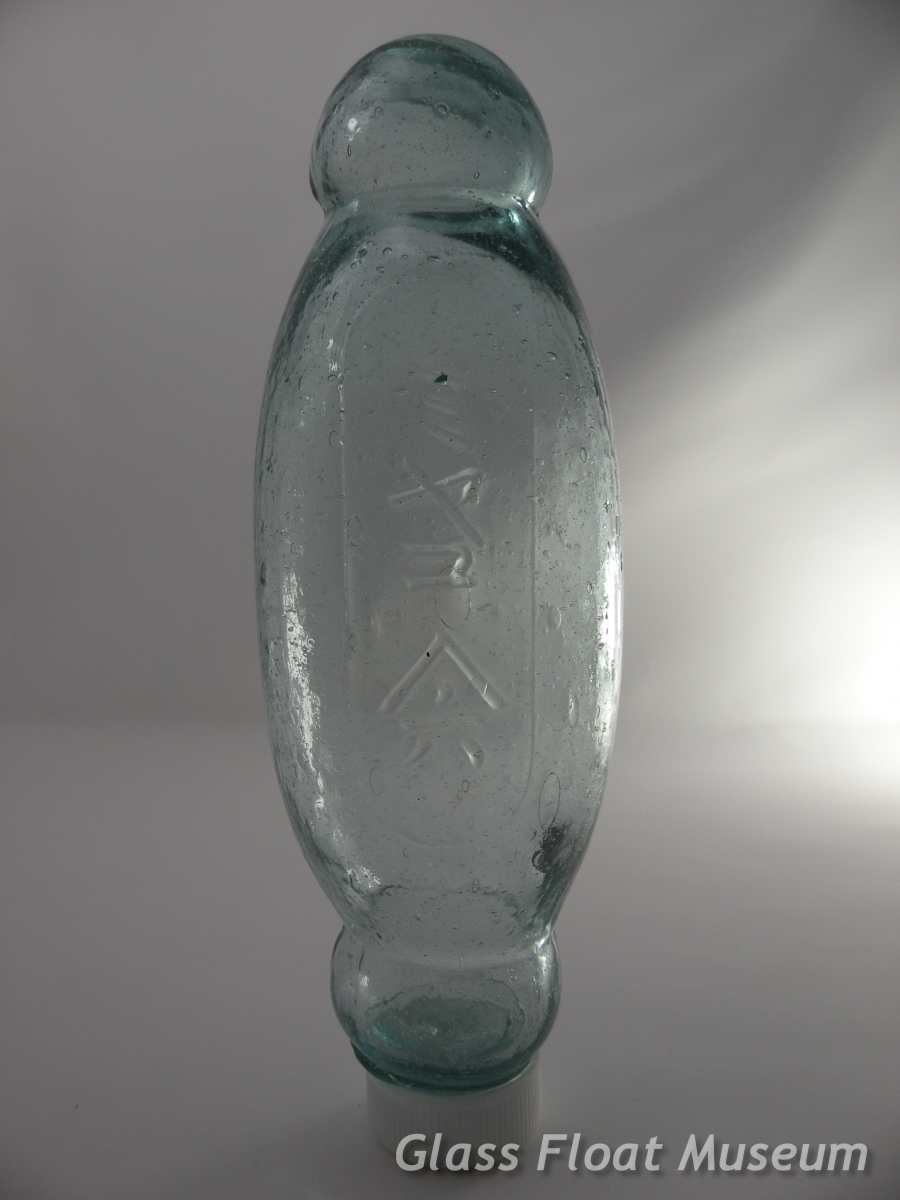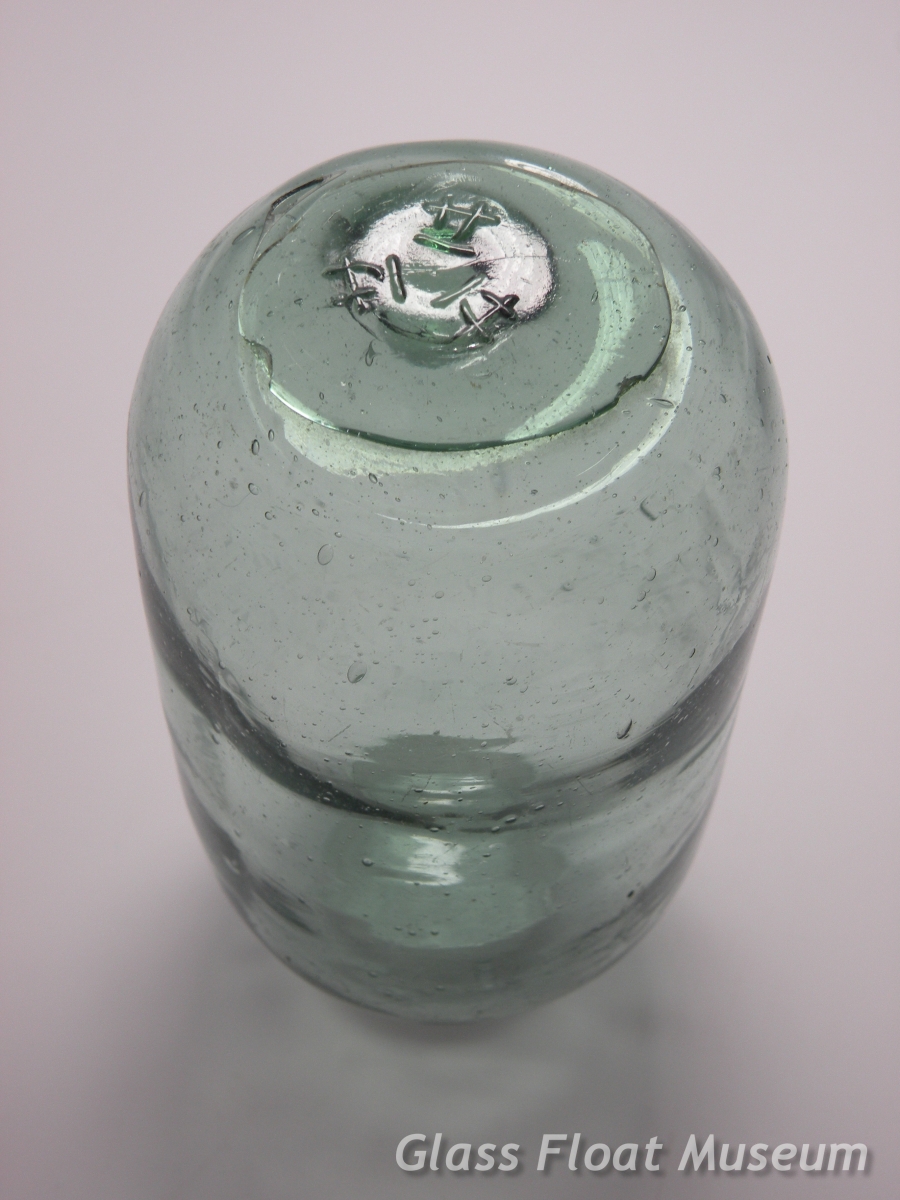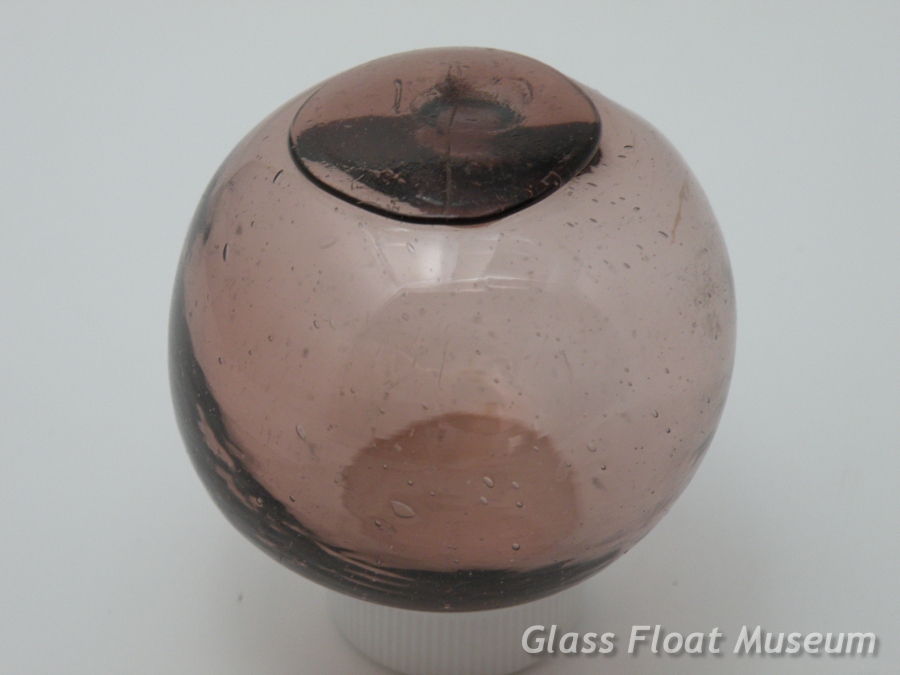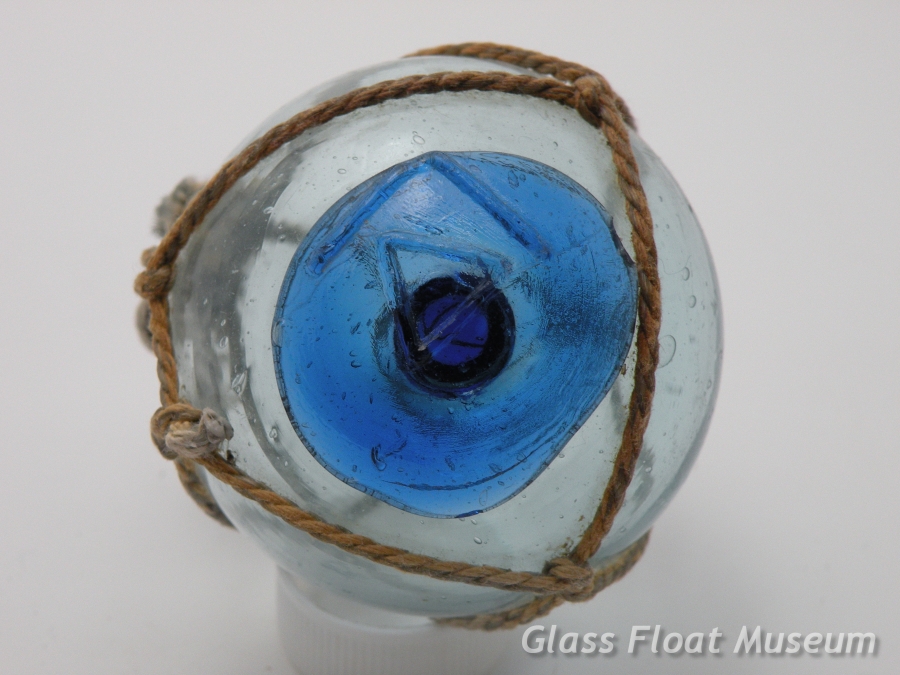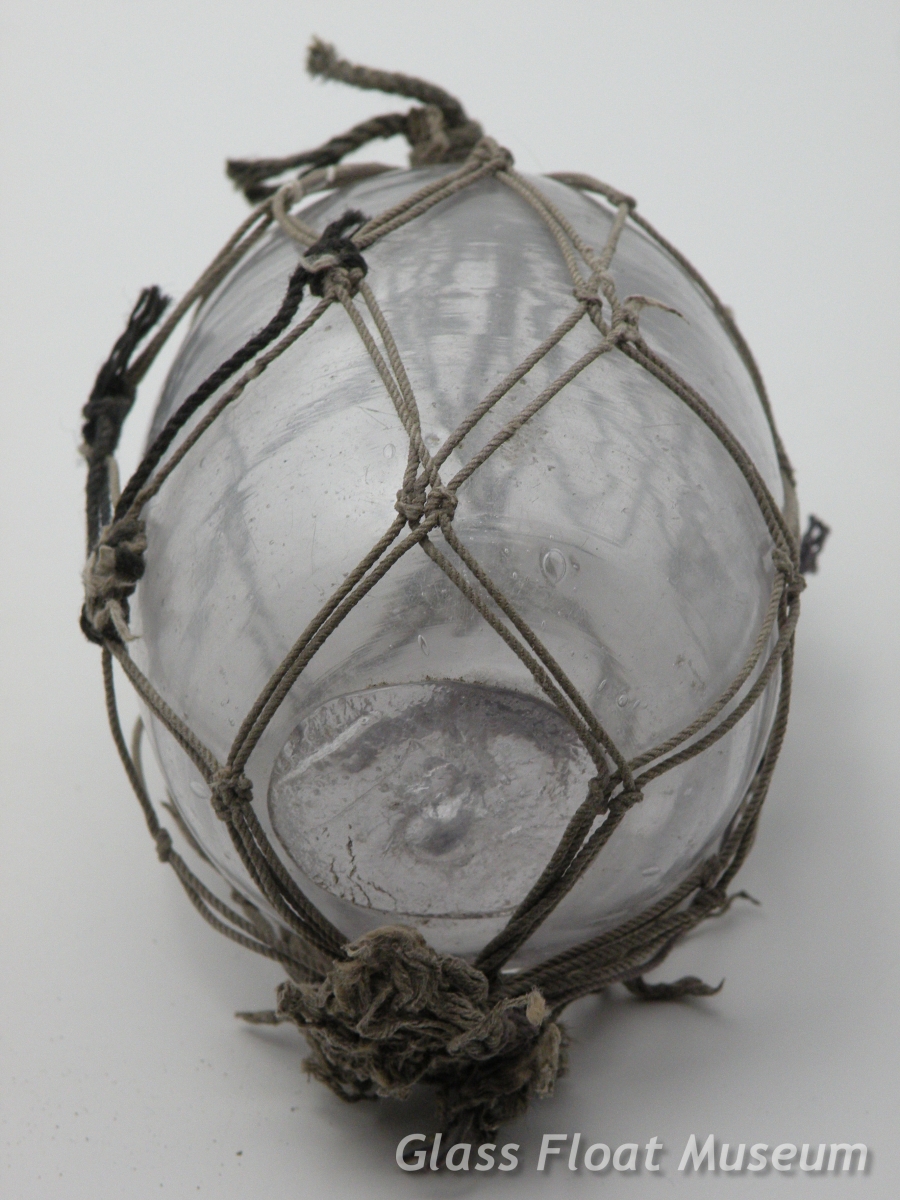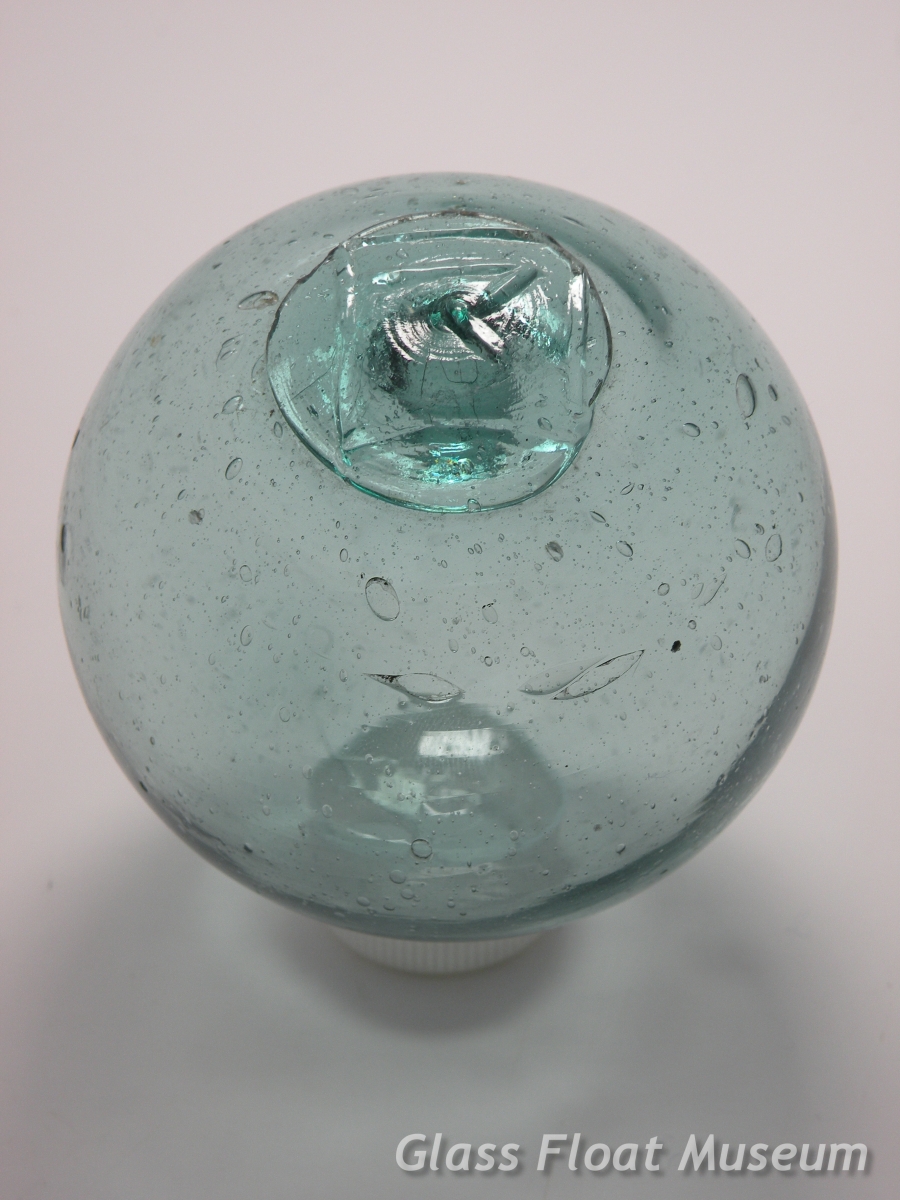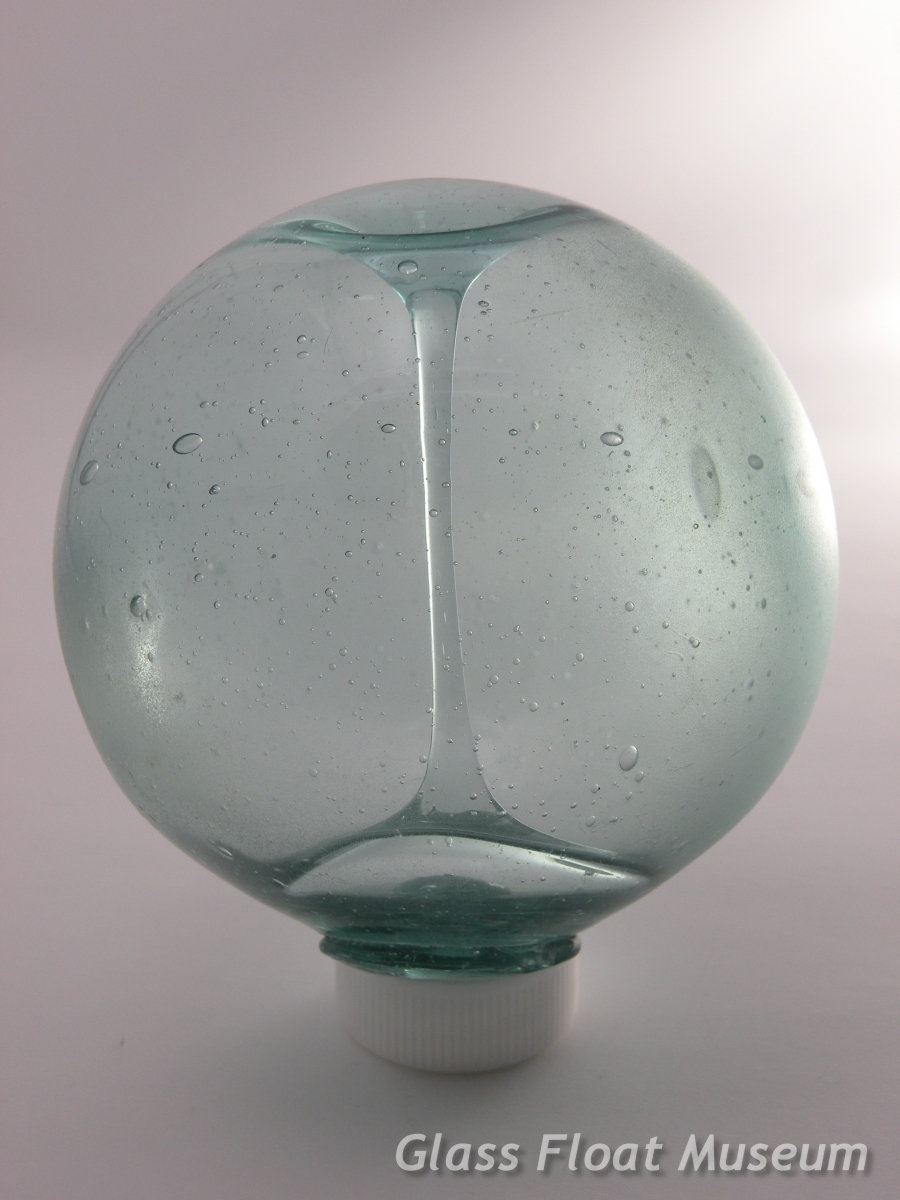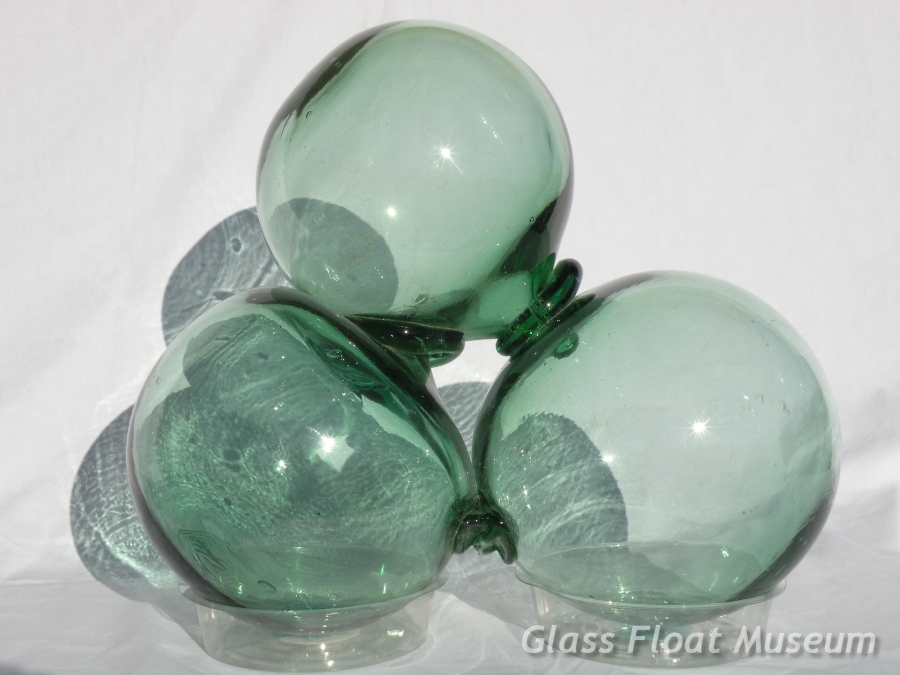
Keith Glein
This is a nice example of a Pie Seal on a 4 inch float.
There's lot of swirling on the surface of the glass that adds character to this float.
Smaller Pie Seal float are actually quite rare.
This standard Hokkaido roller is filled with extraordinary amber gold swirls.
This roller shows signs of quite a bit of use that leads me to believe it is an authentic working.
There is some shell life attached that appears to be remnants of barnacles.
It also has a nice example of a 'green eye' in the seal button.
Found on Hokkaido Island, Japan.
This is just an absolutely stunning beautiful roller!!!
Found on Hokkaido Island, Japan.
This is the only example of a 'Double Pumpkin' I've ever seen. By Double Pumpkin, I mean that there are two pumpkin floats that are roped together in their original netting.
One pumpkin has one patch or dab of glass attached to the float. The other pumpkin has three patches.
There is a disc of rubber between the two floats, so the two glass floats don't actual touch each other. It appears to be made out of something like a piece of tire.
The ropes are quite interesting. They look to be of very poor quality. I've seen a few pumpkins with their original nets and this netting appears to be quite similar.
I think this helps explain why these floats got away from the fishermen. The rope is of such low quality that these pumpkin floats wouldn't remain secured for long in the rigors of ocean fishing.
Love this unique configuration and use of pumpkin floats.
Found on Hokkaido Island, Japan.
This Kanji Roller is stamped with WP #149 'Miyako Roku'. The bottom symbol is 'Roku' 六 under a Roof mark.
The length of this kanji roller is quite unusual. It measures 6 7/8 inches long. Typically, WP #149 kanji rollers are the standard 6 inches in length. I showed this kanji roller to Walt Pich and he explained that it was made from a mold that he had seen before.
Walt also stated that the script was 1st generation. Case-in-point, if you look at the top symbol the 3 lines are shorter than when compared to 2nd generation marks.
It's a beautiful bright float with tons of bubbles in the glass.
There's also a large kiln stone that's 3/8 inches long located on the mold line.
This is a great example of how a float may seem to be 'standard' at first, but when examined more closely can be revealed to be a true one-of-a-kind gem.
Standard sized Sausage with a perfect stamp of WP #130 mark; that's the symbol 'Sa' サ in a triangular configuration.
The length of the float is 4 1/8 inches.
There are lots of bubbles of different sizes in the glass.
This is a rather light color for a Cranberry float.
The float is solid cranberry color but the color seems to vary in darker in the base. This could be do to the variations in the glass thickness.
This float is also out-of-round.
The seal is in perfect condition; not even a flea bite.
From Nagoya, Japan.
Blue Dot float with a stamp of WP #56 maker's mark.
Nice netted float that measures 2 1/2 inches in diameter.
Found on Hokkaido Island, Japan.
Very nice netted Bubble Sausage float.
This float is clear in color with a little pint tint.
It measures about 4 1/4 inches in length. It's considered a 'large' bubble sausage.
Found in Northern Japan.
This float comes with excellent provenance having been acquired from the ex-Col. Rich Richardson collection.
This is an undocumented mark with similarities to both mark WP #295 and WP #296. It looks like a mirror image of mark WP #295.
It is 'Seihokei Ma' which is the katakana 'ma' symbol マ inside of a box.
The mark is a bold stamp that completely fills the seal.
This float is 3 inches in diameter and has lots of bubbles.
Beachcombed on Kunashir Island, Russia. Kunashir Island is one of the four major islands in the Kurile Islands located north of Japan.
Olga & Dmitry found this float. Olga sent the following story about their discovery.
Olga: "This float was found five years ago not far from the Yujno-Kurilsk village. After one huge storm the sea shore was deformed and we found an old japanese sheld, the ocean washed it up. Under the wall of it we found a lot of glass floats, the most part of them had this mark."
Authentic old Japanese glass fishing float with a thick Spindle.
The spindle is free standing and it's visibly quite prominent. It has a ribbon type shape, where it's thinner in depth and wider across.
There's lots of frosting except right in front of the spindle.
Beachcombed on Kunashir Island, one of the Kurile Islands north of Japan in Russia.
Very rare Trinary float.
This unusual float was produced by fusing three 8 inch together with glass seals between them.
All three of these floats are a nice shade of green.
Acquired in Hawaii.


